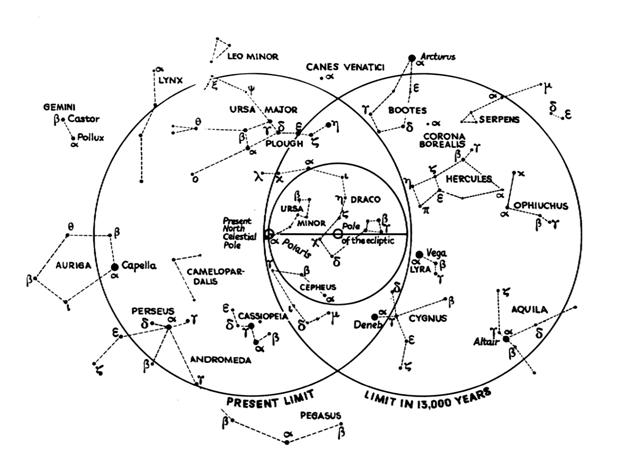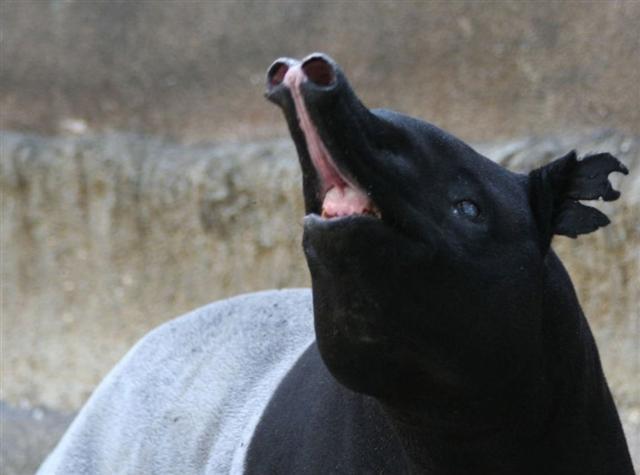480. The Hindu suggested we should think about the Tusks of an Elephant at the change from one year to the next:
Presumably the dates for these nakshatra stations had been locked to the time of the birth of the Gregorian calendar. A newborn is always a very small person and therefore a very old person should be great in contrast - comparable to an elephant in size.
And after the Winnowing (of the great old one) there should be a small bed (cradle) waiting for the new little one. ... As has already been mentioned, the Delphians worshipped Dionysus once a year as the new-born child, Liknites, 'the Child in the Harvest Basket', which was a shovel-shaped basket of rush and osier used as a harvest basket, a cradle, a manger, and a winnowing-fan for tossing the grain up into the air against the wind, to separate it from the chaff. The worship of the Divine Child was established in Minoan Crete, its most famous early home in Europe. In 1903, on the site of the temple of Dictaean Zeues - the Zeus who was yearly born in Rhea's cave at Dicte near Cnossos, where Pythagoras spent 'thrice nine hallowed days' [27] of his initiation - was found a Greek hymn which seems to preserve the original Minoan formula in which the gypsum-powdered, sword-dancing Curetes, or tutors, saluted the Child at his birthday feast. In it he is hailed as 'the Cronian one' who comes yearly to Dicte mounted on a sow and escorted by a spirit-throng, and begged for peace and plenty as a reward for their joyful leaps ...
Vega had been the star at the north pole half a precessional cycle ago (26000 / 2 = 13000 years):
The Chinese had their Winnowing Basket at Nash (*273.7), which suggests day 354 (= 274 + 80) = 12 * 29½:
Furthermore, they meant we should consider a Tapir at the beginning of Gemini, where Agastya (Canopus) rose with the Sun and once upon a time had digested all the waters of the ocean:
... The Pythagoreans make Phaeton fall into Eridanus, burning part of its water, and glowing still at the time when the Argonauts passed by. Ovid stated that since the fall the Nile hides its sources. Rigveda 9.73.3 says that the Great Varuna has hidden the ocean. The Mahabharata tells in its own style why the 'heavenly Ganga' had to be brought down. At the end of the Golden Age (Krita Yuga) a class of Asura who had fought against the 'gods' hid themselves in the ocean where the gods could not reach them, and planned to overthrow the government. So the gods implored Agastya (Canopus, alpha Carinae = Eridu) for help. The great Rishi did as he was bidden, drank up the water of the ocean, and thus laid bare the enemies, who were then slain by the gods. But now, there was no ocean anymore! Implored by the gods to fill the sea again, the Holy One replied: 'That water in sooth hath been digested by me. Some other expedient, therefore, must be thought of by you, if ye desire to make endeavour to fill the ocean ... ... Canopy ... covering over a throne, etc. XIV (Wycl.). Late ME. canope, canape - medL. canopeum baldacchino, for L. cōnōpēum, -eum, -ium net over a bed, pavilion - Gr. kōnōpeîon Egyptian bed with mosquito curtains, f. kōnōps gnat, mosquito ... A tapir is much like an bably elephant, and from June 24 (175) to December 20 (354) there were 179 (= 365 - 186) right ascension days.
... As if a three-way argument over identification as macaws, turtles, or elephants were not ridiculous enough, it has also been suggested that the animal shown is a tapir. No competent professional has taken the latter opinion seriously, but it still finds occasional supporters among those who are unwilling to believe in trans-Pacific trading of elephant art and yet cannot quite believe Stela B shows macaws. Elliott Smith suggested that a conventionalization first applied to elephants was shifted to macaws by Mayan artists copying art objects showing elephants, with which they were, even in his view, unfamiliar ...
|
|||||||||||||||||||||||||||||||||||||||||||||||||||||||||||||||||||||||||||||||||||||||||||||||||||||||||||||||||||||||||||||||||||||||||||||||||||||||||||||||||||||||||||||||||||||||||||||||||||||||||||||||||||||||||||





